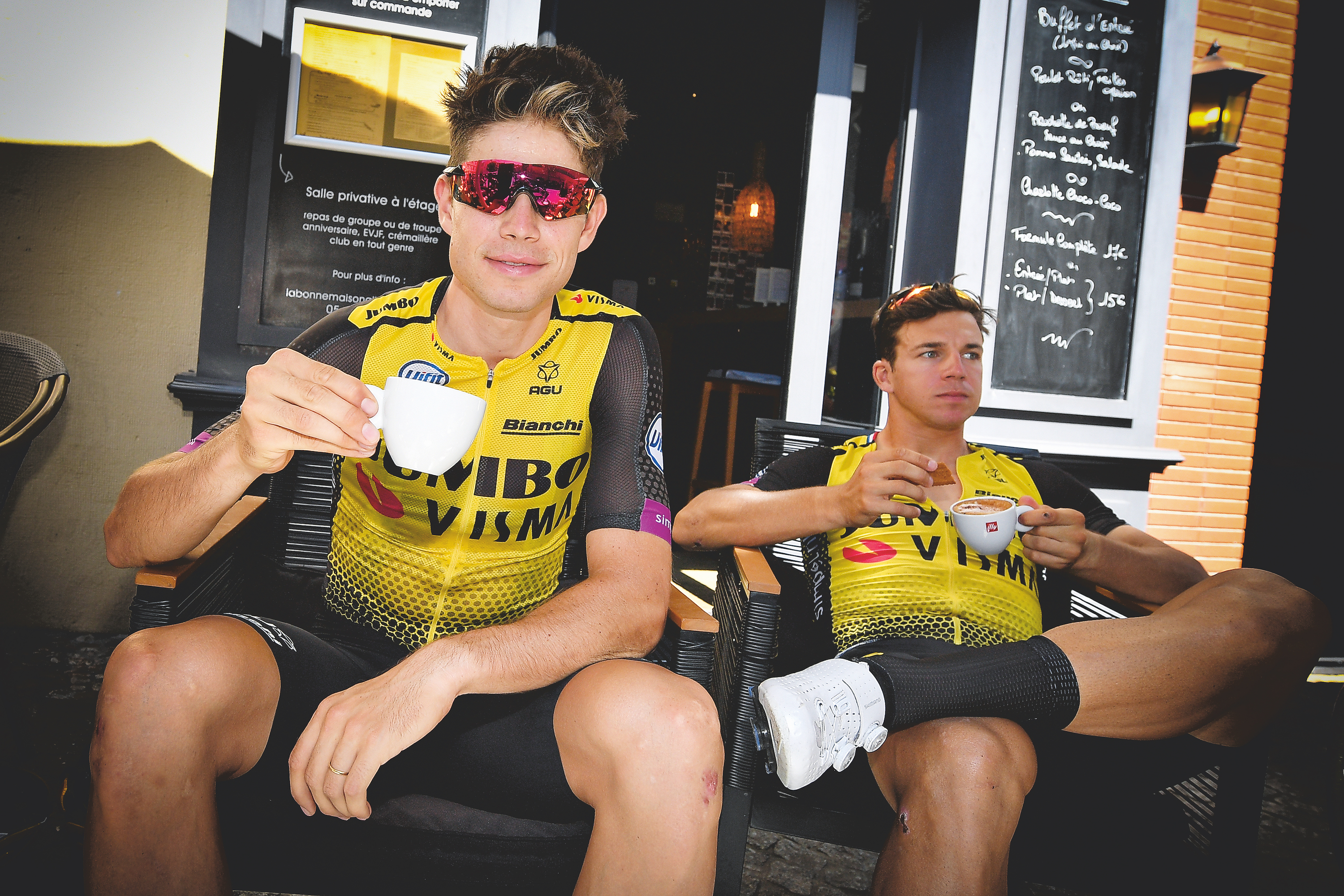
As you read this, it is not unlikely that you have a coffee in hand. Ninety-eight million cups of the black – or brown, or white – stuff are drunk in the UK every day. Tea might still hold the upper hand as Blighty’s national beverage, but coffee is on the march, and has been for 400 years.
Your morning cafetiere or coffee stop flat white might seem routine, but every time you add hot water to grounds and brew, you’re joining in a history that stretches back a very long way.
In cycling, coffee is associated not just with taste but image too. As far back as the 1950s, during the long-drawn-out war between cycling’s governing body in the UK, the National Cycling Union (NCU) and the upstart British League of Racing Cyclists (BLRC) over the latter’s desire to race on open roads, coffee was a signifier of cool.
It’s an episode told by Michael Hutchinson in his book Re-Cyclists: “It wasn't just the racing, it was cultural… The establishment riders and officials were from a black-and-white age; the Leaguers were, to be blunt, cool. They wore sunglasses, they had brightly coloured jerseys. They bought the French sports paper Miroir-Sprint if they could find it, whether they could read French or not, and looked at the pictures in coffee shops.”

Coffee has always been a cool accoutrement in cycling, from the days of Coppi sipping espresso and Eddy Merckx riding for Faema, a team named after its Italian espresso brand sponsor.
The ritual, the aroma, the sophistication – it all ties into the urge, in cycling, to look and feel European, Continental, cosmopolitan and modern. It seems odd, then, that France has a reputation for bad coffee.
“It’s ironic,” agrees Will Corby, head of coffee at Pact Coffee, “that coffee in France is generally terrible. The connection feels culturally far more tied to Italy.”
Other coffee brands, observing the success of Faema in cycling, strove to forge links to the cosmopolitan sport. In the 1980s, there was Café de Colombia in the peloton; in the 2020s, there was Segafredo – big names in coffee wanting to prosper from the connection.
Bear in mind that neither coffee nor cycling have always been mainstream interests, particularly in Britain. Both were minority pursuits, the preserve of renegades and weirdos. For those on the inside of these two connected subcultures – be it in the 1950s or the 1990s – rolling into their local cafe for a cup of coffee was just a cool thing to do.
Modish to mainstream
In 2024, though, it has gone from just a quirk or affectation to something wholly normal for almost everyone. Just as cycling has gone (arguably) mainstream in the UK, so has coffee. It has gone from a barely drinkable sludge that riders tolerated so as to look cool to being a delicious beverage available everywhere in all kinds of varieties.
These days many cyclists are coffee connoisseurs – including Lidl-Trek’s Brodie Chapman. “The first time I ever had a coffee was in France, which, no offence to France, was pretty much the worst I've ever tasted,” she recalls.
“I was in a ski resort and I put about six sugars in an espresso. When I came back to Australia, we went to one of those speciality places where there was a card of tasting notes. From there, I knew I could get into speciality.”
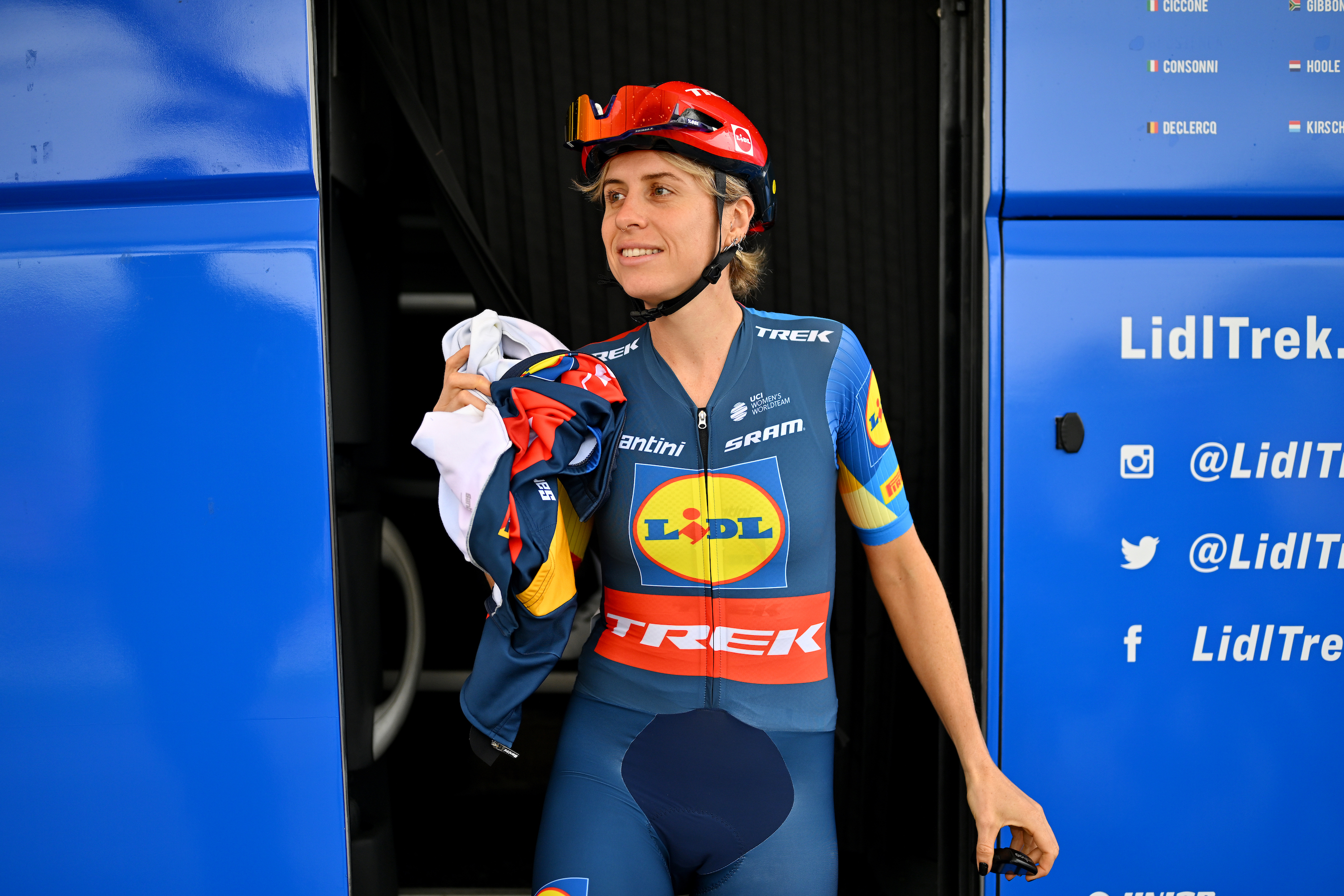
Synergy with cycling
How did coffee and cycling come to seem so inextricably linked? For my generation, cycling without coffee is almost unthinkable. I want to understand the roots of this connection, how it emerged and grew.
Which other sport has such a strong connection with a particular food or drink? Half-time oranges and football? Not really. Tea and cricket? Not anymore. Fondue and skiing? Well, only at certain times of year.
“I don't know what lies behind it,” says Corby. “No matter how long or short a ride you go on, everyone wants a coffee. Maybe it's because when you're on a tougher ride you don't have a chance to chat until you stop.”
Does it exist the other way around, are coffee pros into bikes? “No, they aren't necessarily into bikes. The connection is so unusual. Even in cooking, it doesn't seem the same.”
Most cyclists are coffee drinkers. On a ride, either as a pit-stop or a post-exercise catch-up, the coffee stop is mandatory for many groups. “You're outdoors already, often riding early in the morning, so you go to a coffee shop to catch up, socialise, and have snacks,” Chapman explains. “Australia has a very strong coffee culture. It's one thing you can't do on the internet, catch up for coffee, have a brew.”

On a long ride, a coffee is a natural break, somewhere to breathe and take stock. A cup of tea seems ludicrous, a beer even more so, and a soft drink not enough. A coffee meets all the needs.
Another Australian, Bobby McNicol, the manager of the Rapha Clubhouse in Manchester, supports Chapman’s observation. “Cafes serve as pillars for communities and an obvious meeting place for groups to catch up. It's the ideal meeting point for cyclists, and the ability to refuel on cake and caffeine mid-ride has become such a big part of cycling culture that a 'cafe ride' is a staple of most cyclists’ week.”
One of cycling’s most iconic coffee shops, La Fabrica Coffee Works in Girona, is owned by Canadian former national road race champion Christian Meier. “The coffee stop is something to look forward to, like a destination or a treat after a big day out,” he tells Cycling Weekly.
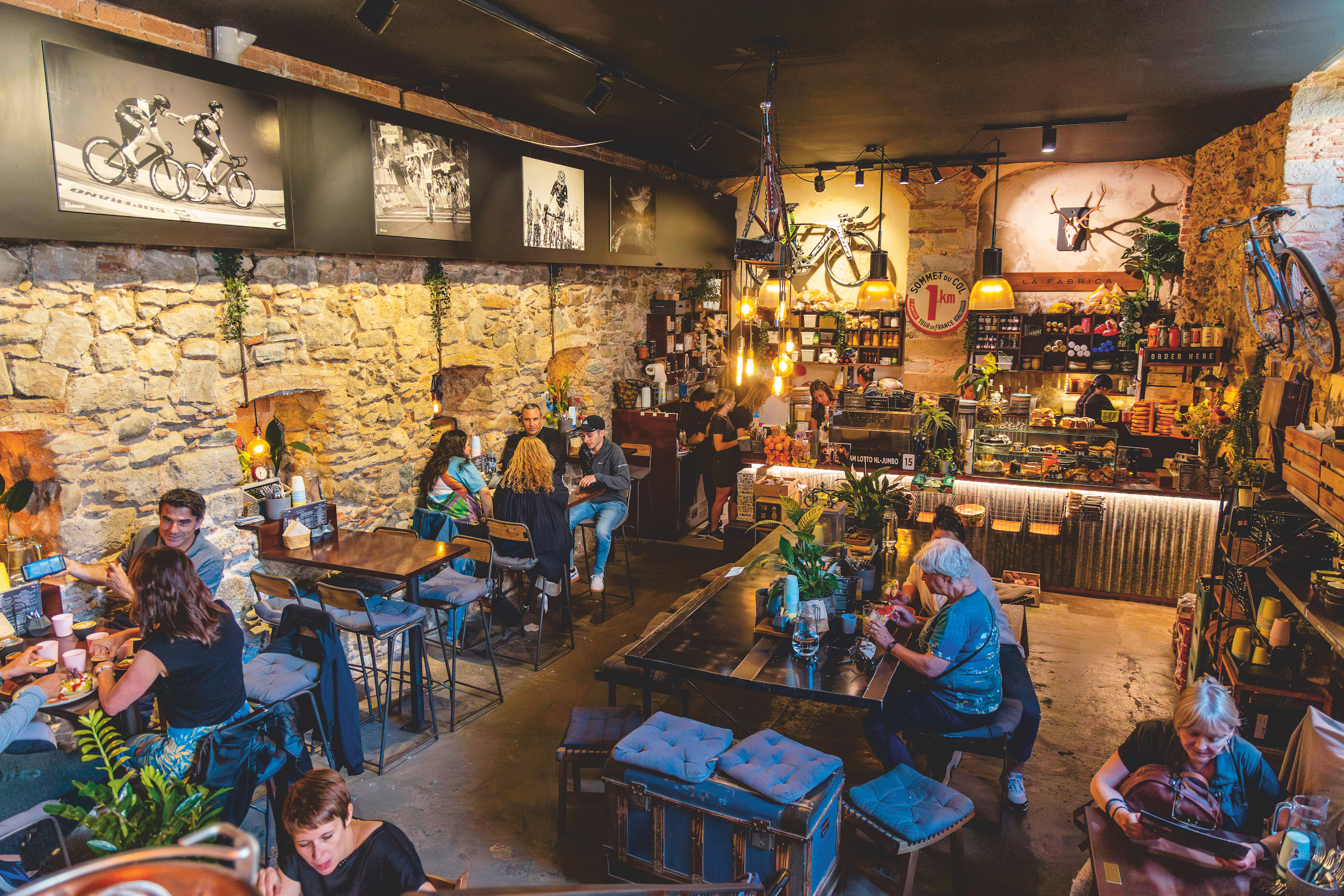
“Also, if you have an easy day, it's a nice slow way to start the ride and a good place to meet with your mates before heading out.” We all frequent cafes, but they seem to have a special significance for cyclists. Perhaps the bonds we form while riding are strengthened while chatting over coffee.
There are cycling cafes that cater specifically to the Lycra-clad crowd, in cities and on popular cycling routes, which become destinations as well as pit stops. The much-loved Look Mum No Hands in central London was one example, now sadly shut down, but there are dozens of others across the country.
Cycling Cafés by Kitty Pemberton-Platt celebrates 22 such venues across the country. The foreword to the book was written by Tao Geoghegan Hart, now of Lidl-Trek: "I'm most definitely a cafe stop addict. I strongly believe any bad ride can be turned on its head by a good cafe. That any day with s*** weather can be saved with a 2.5hr ride to a location promising carbs and caffeine - before remembering you also have to get home!"
Caffeine and performance
Between 1984 and 2004, caffeine was on the World Anti-Doping Agency’s list of prohibited products. This didn’t mean riders weren’t allowed to indulge in a casual cup of coffee, but it did mean they couldn’t take excessive caffeine – urinary caffeine concentration above 6.0μg/mL had to be reported, indicating the athlete had drunk the equivalent of at least six cups of coffee. Since then, however, athletes have been able to take caffeine freely.
“Caffeine is a natural stimulant and has several benefits to athletes including improved blood flow, so it's something of a performance enhancer,” McNicol explains, “but I'd say its place in cycling is more cultural than performance-based.”
There is no doubt that caffeine is now widely used at every level of the sport. “I don't go to cafes after rides for performance, but I do take caffeine during races,” Chapman says. “
It reduces the perception of effort, so it makes the ride feel easier. That's the point of taking caffeine – it gives you a bit of a buzz, it helps you through a race. There are [caffeinated] gels flavoured as double espresso, but I'd just rather have a coffee, if I'm honest.”
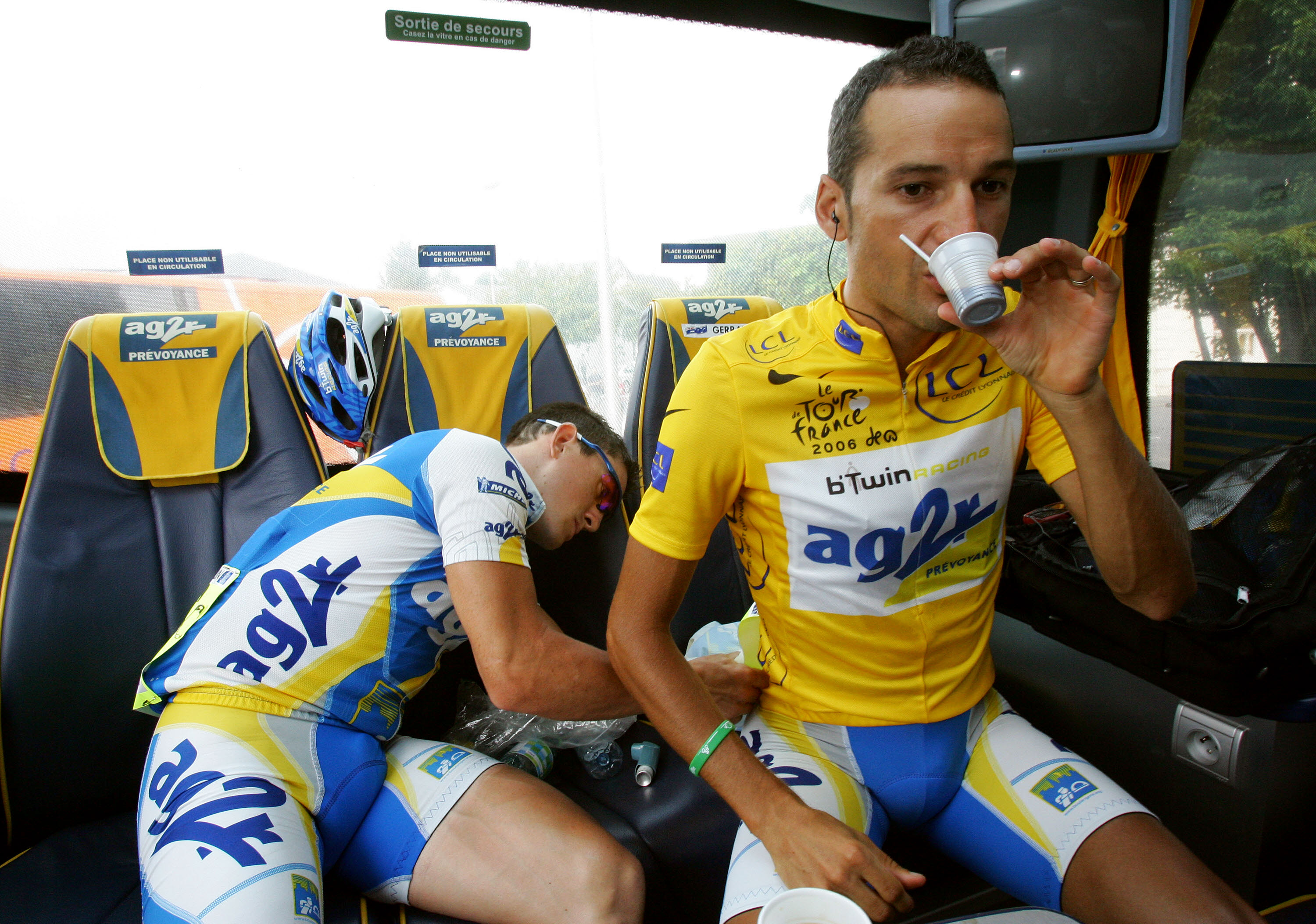
Every professional cyclist seems to have a semi-professional coffee set-up at home, or on the bus. Whereas alcohol is seen as anathema during the season, good coffee is a sin-free performance perk – and every pro seems to take great pride in their coffee machine. One company seems to be more prevalent than any other: Rocket Espresso. The Italian brand can be seen emblazoned on the buses of Bahrain-Victorious and Soudal Quick-Step, but also appears in kitchens across the pro peloton.
Brent Backhouse, Rocket’s social media manager, and another Antipodean, tells Cycling Weekly: “Quite early on in our journey, we realised the connection between cycling and coffee. We were contacted by Bradley Wiggins and Mark Cavendish, who wanted machines, and I guess that was kind of a lucky break.”
Rocket proactively nurtured the link. ”We did some limited-edition machines for the Giro d'Italia,” says Backhouse, “and then the long list of pros who have custom machines started rolling in. Greg Van Avermaet once bought five or six machines for his teammates to thank them. It's been a pretty amazing thing.” Pro riders are usually given a discount, he confirms, but no Rocket machines are given away for free.
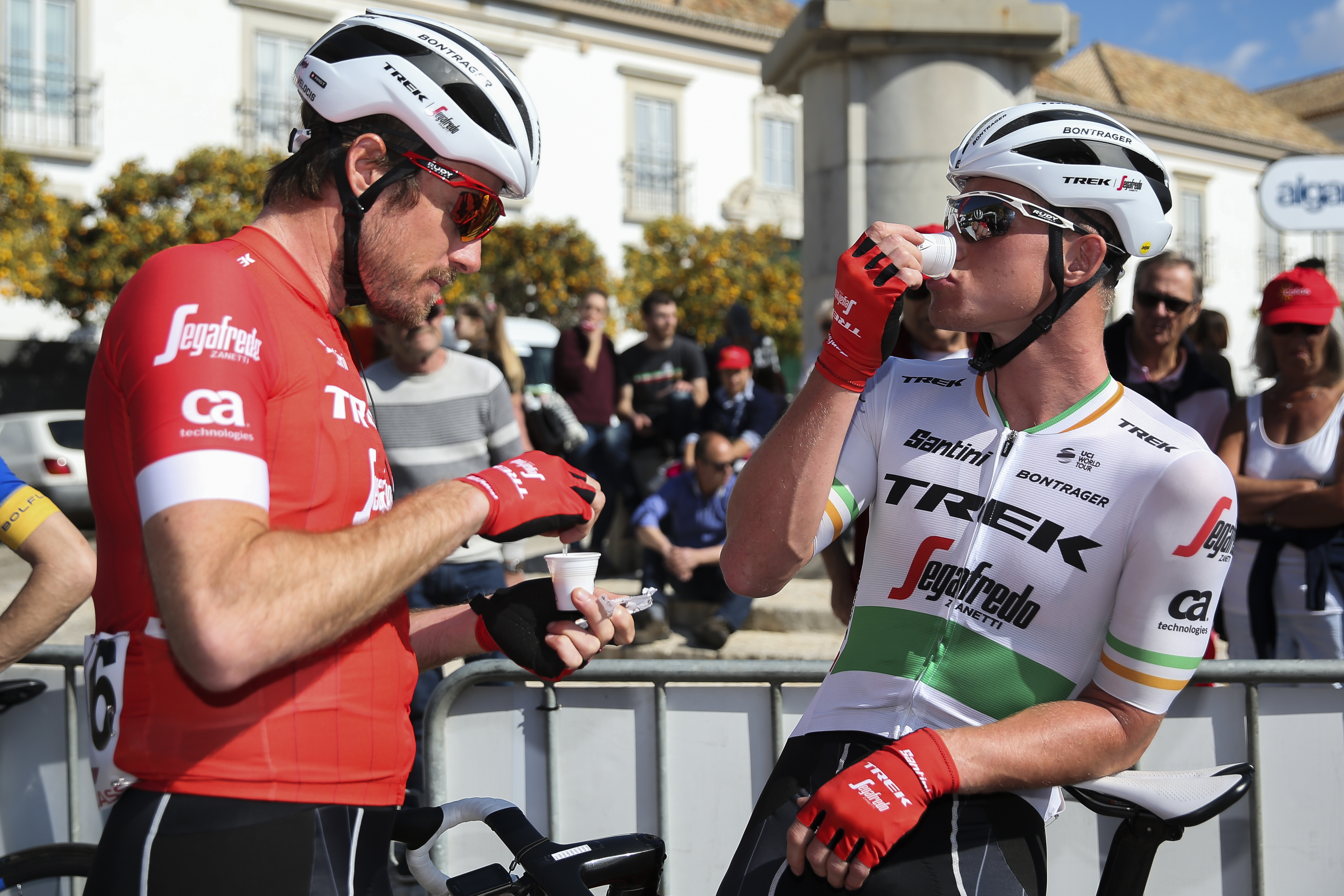
While most of us are competent with a cafetiere, V60 coffee dripper or Aeropress to make a decent cup of coffee, it takes work to get really great espresso out of a machine – even if you have a Rocket. Perhaps pro cyclists enjoy this process of getting properly dialled-in and set up? “Professional cyclists have the time to tinker with their machine and get into the process of it,” Backhouse agrees. “Unless you're really into it, though, you will likely get a bad coffee.”
Espresso might seem to be dominant in the world of cycling and coffee shops, but it might not necessarily be the best way to get caffeine into your body. And it’s harder to perfect, too, so don’t feel you need to join the tiny cup brigade. “The culture of espresso in cycling is really big,” Corby says. “If I was advising someone, though, I'd tell them to drink filter coffee. It’s better at home, giving a higher, cleaner caffeine hit, with little investment needed.”
For many professionals, it seems that taking a perfectionist approach to coffee keeps them centred. “I think it's a comfort thing, the routine of making a coffee is the one thing that I'll take all over the world,” Chapman says. “I have a little grinder that holds about 12g of beans, and a portable V60 for pour-over. I bring a bag of beans, and a couple of filters, and it's pretty much the same all over the world. It's a nice routine.”
Coffee is probably just as ingrained a part of your own routine. Take pride in the fact – the next time you stop for a mid-ride, or when you finish the cup you’re drinking as you read this feature – that you’re partaking in cycling’s long, complex love affair with coffee.







